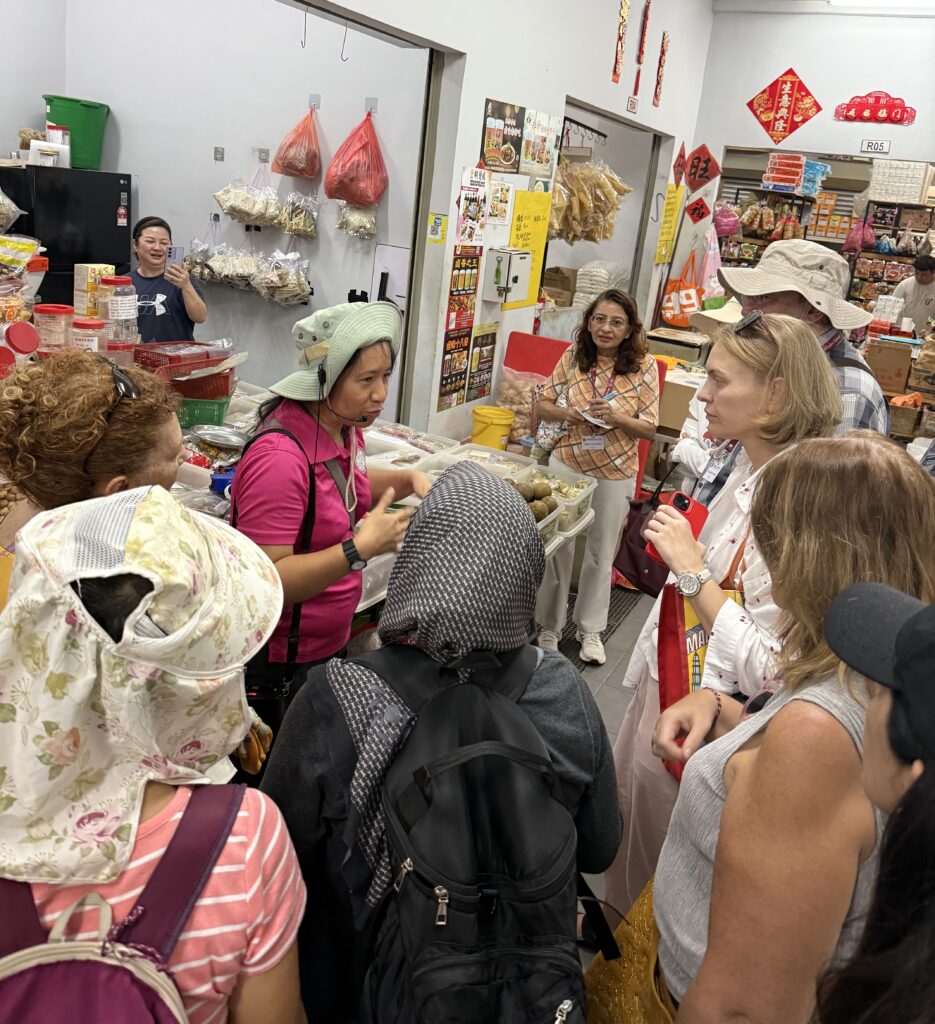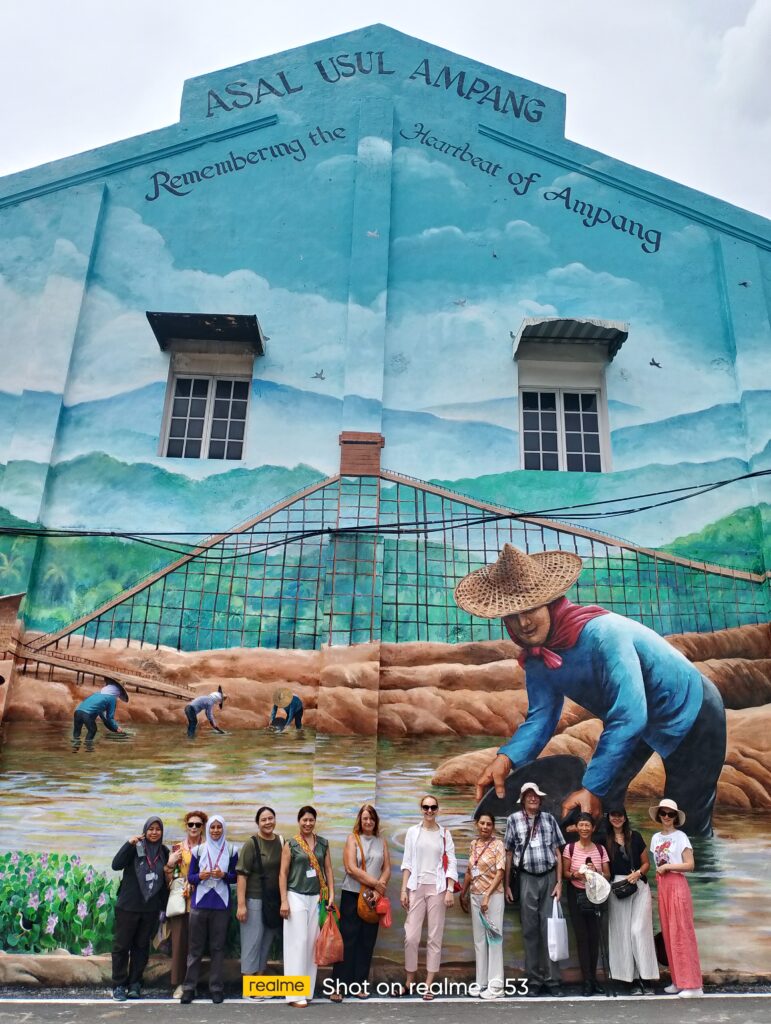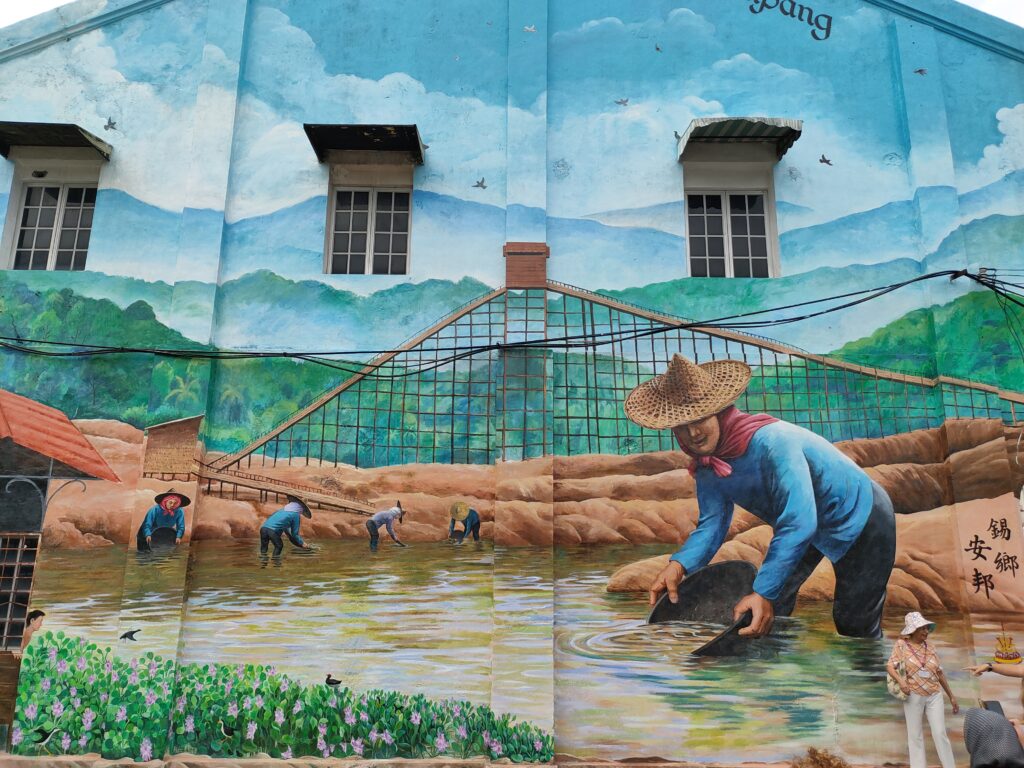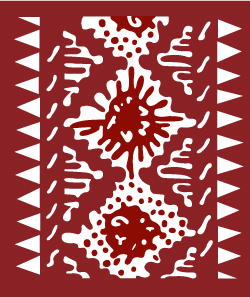
At 8:45am on a balmy Tuesday morning, twelve eager explorers gathered at the Ampang LRT Station to embark on the Ampang Heritage Walking Tour, guided by MCG member Elena Shim. This tour focused on the rich cultural footprint left by the Chinese diaspora in Ampang — a community with deep historical roots.
We learned that during the height of the Malayan Emergency in the 1950s, the British government established the Ampang New Village as part of a larger effort to resettle rural Chinese communities. This initiative resulted in one of the largest Chinese settlements in the Klang Valley.
Elena began the tour with a short walk behind the LRT station to show us the KTM railway tracks. The Ampang LRT station, opened in 1996, has now served the community for nearly three decades.
Our next stop was Pasar Pekan Ampang, a traditional wet market where we were treated to a sensory experience of local life. We sampled and admired colourful local kueh like ang ku kueh — tortoise-shaped sticky rice cakes with sweet bean filling — and vibrant red sponge cakes. The market was rich with ingredients used in traditional Chinese cooking, such as bamboo leaves for wrapping dumplings and red dates brewed as tea, often served at
Chinese weddings. Behind the market, we explored alleys where pork butchers plied their trade, and tiny carts offered breakfast delights like soy milk and creamy bean curd custard.
We paused at On Pong School (On-Pong i/ Am-pang), one of the few vernacular schools still operating in the area. Established in 1912, it was initially funded by merchants and parents, and by 1946, it had expanded to run two full school sessions.
A major highlight of the tour was the Kau Ong Yah Lam Thian Kiong Temple (安邦南天宮), which dates back to 1862. This magnificent temple is famous for hosting the annual Nine Emperor Gods Festival, held in the ninth lunar month. Upon entering, we were awestruck by the intricate carvings adorning the building. The entrance featured a sunken square — a typical architectural element in Baba-Nyonya homes. The temple blends Taoist and Buddhist traditions, with guardian deities believed to watch over different trades, from orchards to factories.
Next, we visited a rattan shop, a traditional business now in its fourth generation. The shop once traded with Orang Asli communities who harvested the rattan from the jungle. Operating since the early 1900s, this place offered a glimpse into a vanishing artisanal trade.
Our journey continued to the oldest Chinese prayer goods shop in the state, established in 1916. Now run by the third generation, the shop sells joss paper (spirit money), burned as offerings to ancestors and deities — an essential ritual in Taoist practices. Business booms during festivals like Qing Ming, the Lunar New Year, and the Hungry Ghost Festival.
We also stopped by Piew Cheong, a traditional watch shop that has served the community for 60 years and is now run by the second generation. With digital watches dominating themarket, conventional watch repair is becoming a rare skill — making this shop a nostalgic gem.
At Hung Lam Medical Hall, we experienced a throwback to the traditional Chinese medicine shops of the past. These were familiar haunts in my childhood during the 1970s — places where ailments were diagnosed by examining your tongue, eyes, and pulse, and remedies were mixed with herbs and roots. The shop’s shelves were lined with ingredients, each emitting distinct scents. Some of our group members picked up herbal blends to brew at home.
Our final stop was Lorong Mural Pekan Ampang, where a stunning mural, recently unveiled in January 2025, now livens up the lane. Naturally, we gathered here for a group photo to mark the end of a meaningful journey.
This tour left me with a deeper appreciation and understanding of Ampang’s layered history and vibrant heritage. It was both educational and heartwarming — a walk well worth taking.
Review thanks to Santhi Nair-Moine.
Thanks to Elena Shim for organising and conducting the tour.


